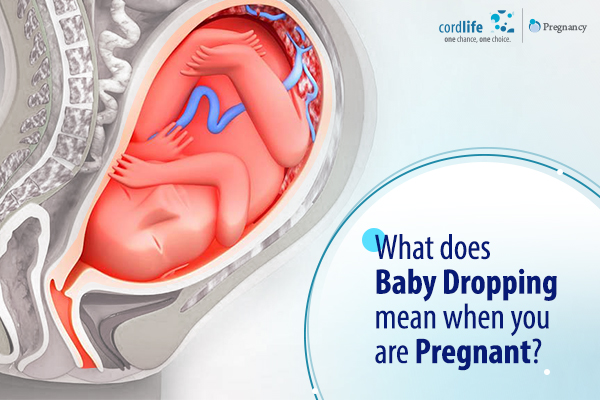Table of Contents
Your family or friends would have mentioned that your baby bump looks lower than usual. They are, in fact, referring to a known as Lightening or Baby Dropping. It is a major precursor to the baby’s arrival.
What it actually means is that your baby’s head descends lower into the pelvis into a position more ready for delivery. The baby’s head is engaged first in your pelvic cavity. Usually, baby dropping occurs as early as two to four weeks prior to the delivery. However, that is not the same for every pregnant woman. So, don’t stress about it a lot as some women experience a drop until labour. Be rest assured that whether your baby drops or not has little to no effect on the delivery.
Let’s talk about what it actually feels like when your baby drops. Firstly, it is a gradual process and not a sudden shift in your baby’s position. Also, it depends on how you are carrying your baby in the belly. If you are already carrying your baby low throughout the pregnancy, then you may not even notice the drop. For moms who are carrying their babies higher, a baby drop would be more noticeable and even make you feel a bit more pressure on your bladder.
Signs of Baby Dropping
- Breathing will get easier: As the pressure put by the uterus on your diaphragm is relieved, you will be able to breathe more freely.
- Belly will be lower: When your baby drops lower down the pelvis, your baby bump too will appear lower and a little more jutted out than before.
- Frequent urge to pee: Yes, your visit to the bathroom will increase. This is because there is increased pressure on your bladder now that your baby has dropped lower.
- Increase in back pain: With the baby dropping, there will be more pressure put on your lower back muscles and joints. So, you may experience lower back and pelvic pains.
- A visible increase in discharge: As your baby’s head presses down on your cervix, it will lead to the cervix thinning and dilating. This is done by ridding the mucus plug that blocks the cervical opening. Hence, you will notice a sticky discharge more frequently during the last weeks of pregnancy.
- Hemorrhoids: When your baby drops lower in the pelvis, more pressure is exerted on the veins of the pelvis and the rectum. It may cause hemorrhoids to appear or even aggravate it if it already exists.
- Less bloating: Since the baby has slid lower in your belly, the weight is off your stomach. This will make having a full meal much more manageable and won’t cause bloating, indigestion or heartburn afterwards.
Tips To Help Your Baby Drop
Here are 3 simple ways to get your little one to drop into the right position in the pelvis:
- Keep walking – It’s the best way to stay fit and relax your pelvic muscles. Walking for 30 minutes daily helps to open up your hips and allow the baby to drop into position easily.
- Try squatting – Simple squatting exercises can help your baby to slide lower into the pelvis. If squatting is difficult for you, try sitting on a birthing ball and gently rocking it.
- Move your pelvis – Pelvic tilts are a great way to relieve stress on your back and assist in baby dropping. Simply stand with the small of your back against a wall and push your pelvis forward and backward a few times.
Once your baby drops, D-day isn’t too far away. So, relax, take deep breaths and get ready to meet your little troublemaker.
